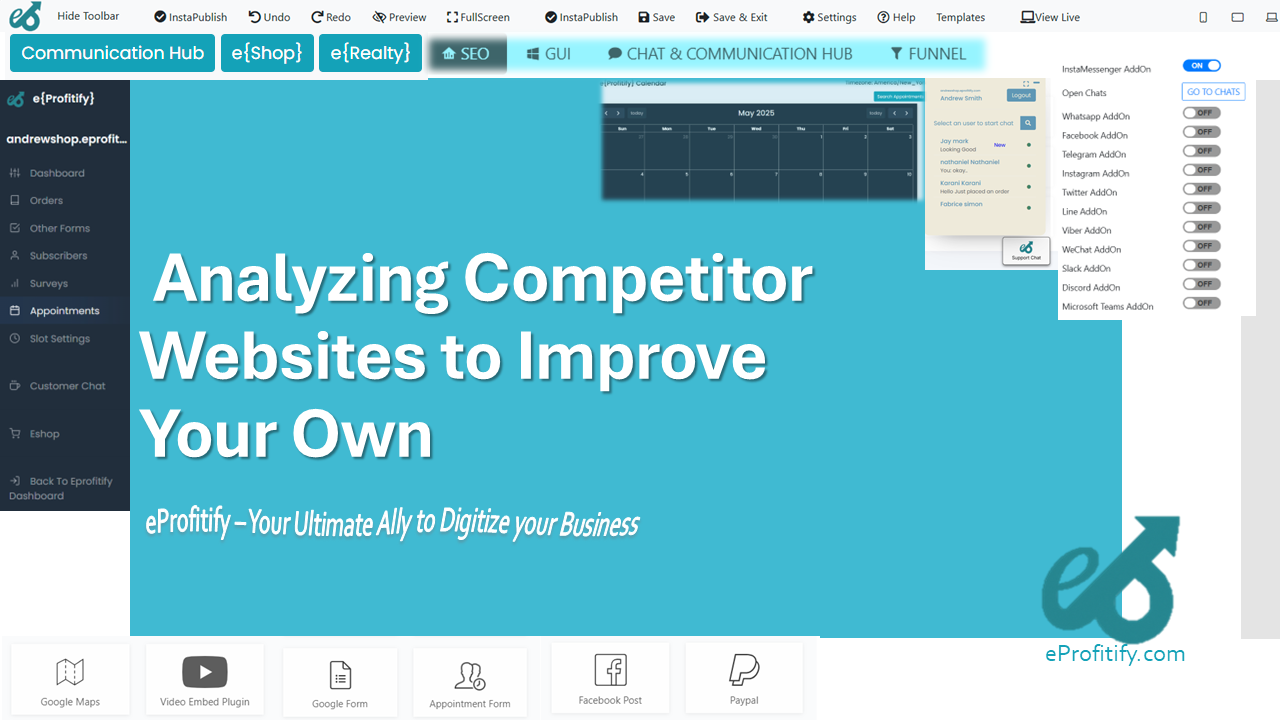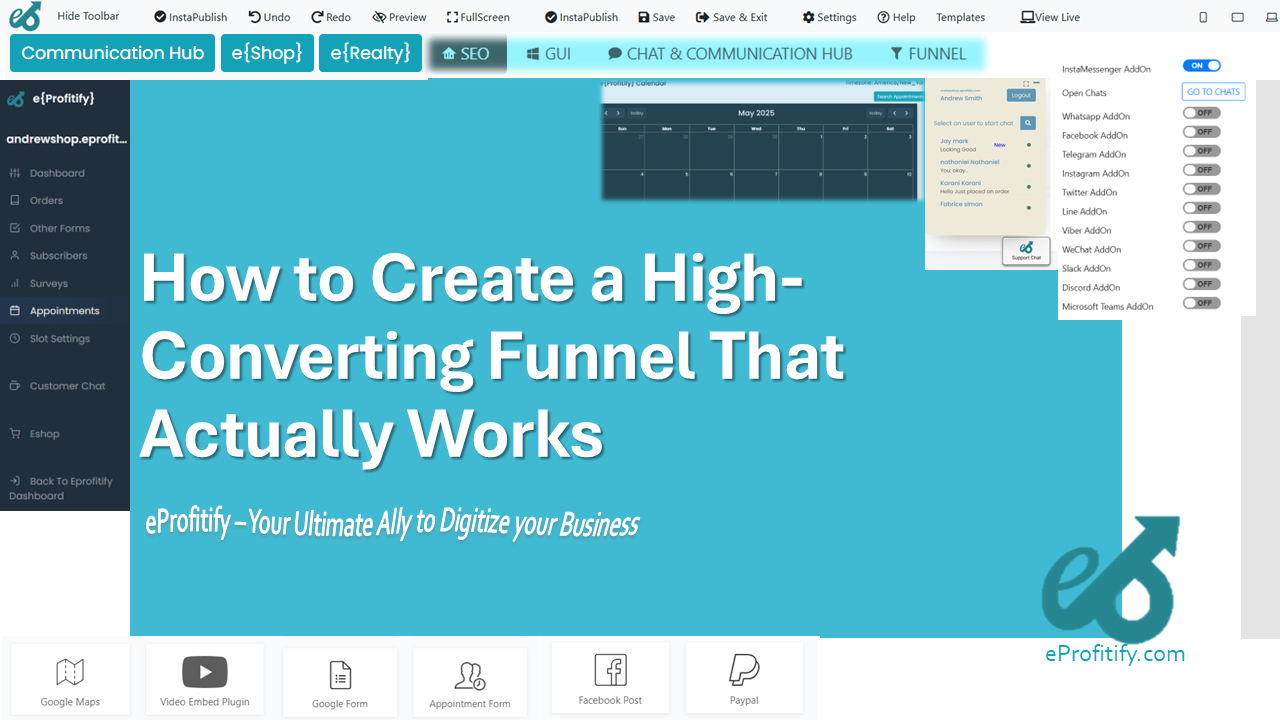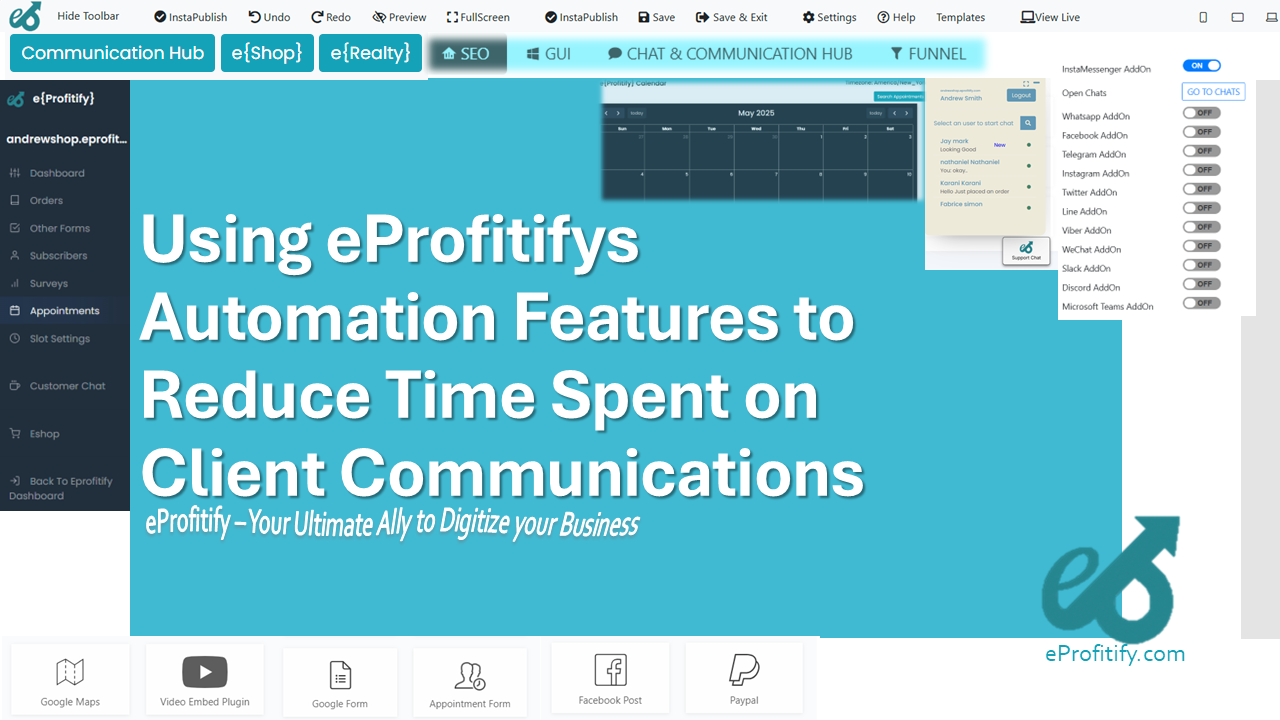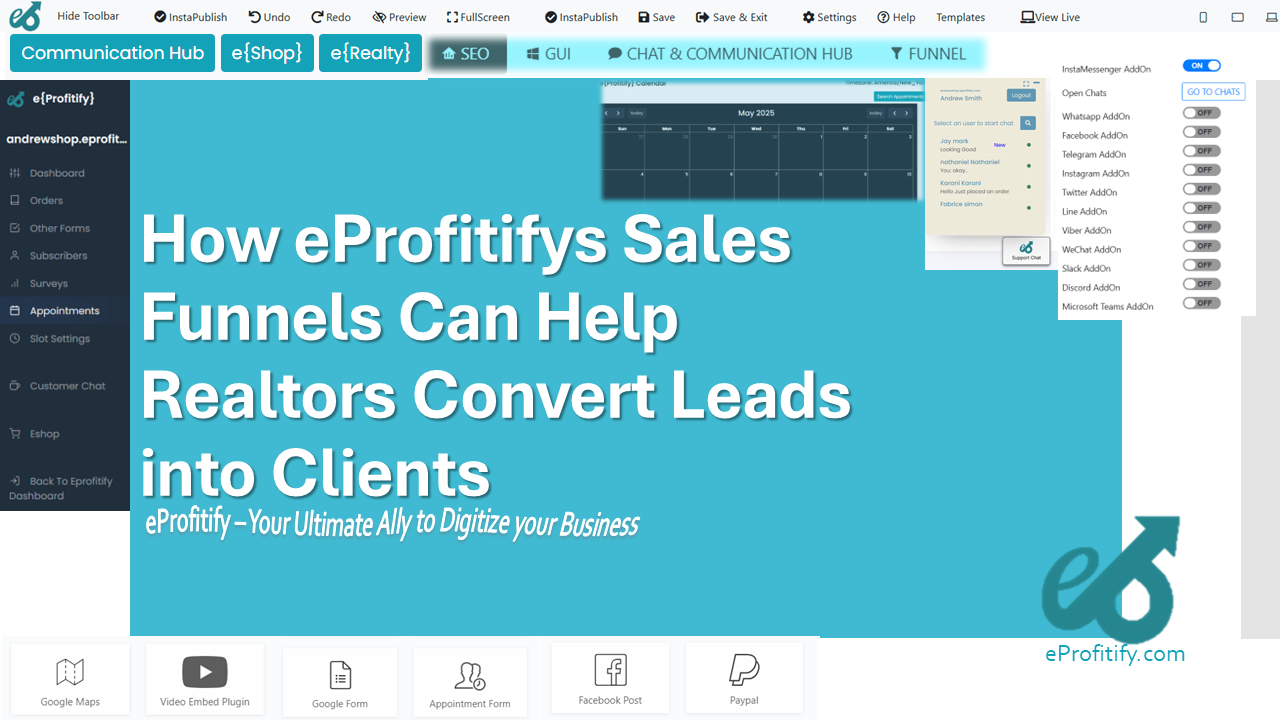Analyzing Competitor Websites to Improve Your Own

Analyzing Competitor Websites to Improve Your Own: Strategies, Statistics, and Tools Like eProfitify
In today’s hyper-competitive digital landscape, businesses must leverage every advantage to stay ahead. One of the most effective strategies for improving your website’s performance is analyzing competitor websites. By understanding what your rivals are doing right (and wrong), you can refine your own strategies, fill gaps in your offerings, and ultimately attract more customers. This article explores actionable steps for competitor analysis, shares critical statistics, and highlights how tools like eProfitify—a leading website management platform—can help you implement winning strategies.
Why Competitor Analysis Matters
Competitor analysis is not just about copying others; it’s about identifying opportunities to differentiate your brand. Here’s why it’s essential:
- Spot Market Trends: Competitors often adopt emerging trends early. Analyzing their moves helps you stay relevant.
- Discover Gaps: Find areas where your competitors are underperforming, allowing you to address unmet customer needs.
- Benchmark Performance: Compare metrics like site speed, content quality, and user experience to set realistic goals.
According to a 2023 report by SEMrush, 60% of marketers analyze competitors at least monthly, and 72% credit competitor analysis with boosting their market share (Crayon). These numbers underscore its strategic value.
How to Analyze Competitor Websites
1. Content Analysis
Evaluate the quality, relevance, and format of competitors’ content. Look for:
- Blog posts, videos, and guides that generate high engagement.
- Tone and messaging that resonates with their audience.
- Gaps in topics they haven’t covered.
Stat: Websites with high-quality content see 7.8x more site traffic than those without (HubSpot, 2022).
2. SEO and Keywords
Use tools like Ahrefs or SEMrush to identify:
- Top-performing keywords driving their organic traffic.
- Backlink profiles to uncover their authority sources.
- Meta tags and headers for optimization insights.
Stat: Pages ranking #1 on Google get 27.6% of all clicks (Backlinko, 2023).
3. User Experience (UX) Audit
Assess navigation, design, and functionality:
- Mobile responsiveness: 58% of global traffic comes from mobile devices (Statista, 2023).
- Page speed: 40% of users abandon sites taking longer than 3 seconds to load (Portent, 2022).
- Call-to-Action (CTA) placement and clarity.
Stat: 75% of users judge a company’s credibility based on website design (Stanford).
4. Features and Functionalities
Identify tools competitors use to enhance UX and conversions:
- Ecommerce integrations (e.g., payment gateways, product filters).
- Customer engagement tools like live chat or chatbots.
- CRM systems for personalized marketing.
Stat: Websites with live chat see up to 20% higher conversion rates (SuperOffice).
5. Social Media and Mobile Optimization
Analyze how competitors engage audiences across platforms:
- Consistency in posting and brand voice.
- Mobile-first design: Ensure your site meets Google’s mobile-first indexing standards.
Impactful Statistics in Competitor Analysis
- Content: Brands publishing 16+ blog posts/month generate 4.5x more leads (HubSpot).
- Ecommerce: Global ecommerce sales are projected to hit $6.3 trillion by 2024 (Shopify).
- Retention: Retaining customers is 5–25x cheaper than acquiring new ones (Invesp).
Leverage eProfitify to Close the Gap
After identifying competitors’ strengths and weaknesses, eProfitify empowers you to act swiftly. As a comprehensive website publishing and management tool, it offers:
- Instant Messaging: Boost conversions with integrated live chat, addressing queries in real-time.
- Appointment Management: Reduce no-shows by 30% with automated reminders and scheduling.
- Ecommerce Integration: Launch seamless online stores aligned with global retail trends.
- CRM Tools: Nurture leads and personalize customer journeys using centralized data.
- SEO Analytics: Track rankings and optimize content effortlessly.
Why eProfitify Stands Out:
- All-in-One Solution: Eliminate the need for multiple plugins or platforms.
- User-Friendly: Designed for both tech novices and experts.
- Scalable: Supports businesses from startups to enterprises.
By adopting eProfitify, you’re not just mimicking competitors—you’re surpassing them with superior tools.
Conclusion
Analyzing competitor websites is a cornerstone of digital success, offering insights into content, SEO, UX, and innovative features. Pairing these insights with eProfitify’s robust toolkit allows businesses to enhance engagement, streamline operations, and drive growth. In a world where 83% of consumers prioritize experience over price (PwC), staying ahead requires both strategic analysis and cutting-edge technology. Start auditing competitors today, and let eProfitify transform your findings into actionable results.







